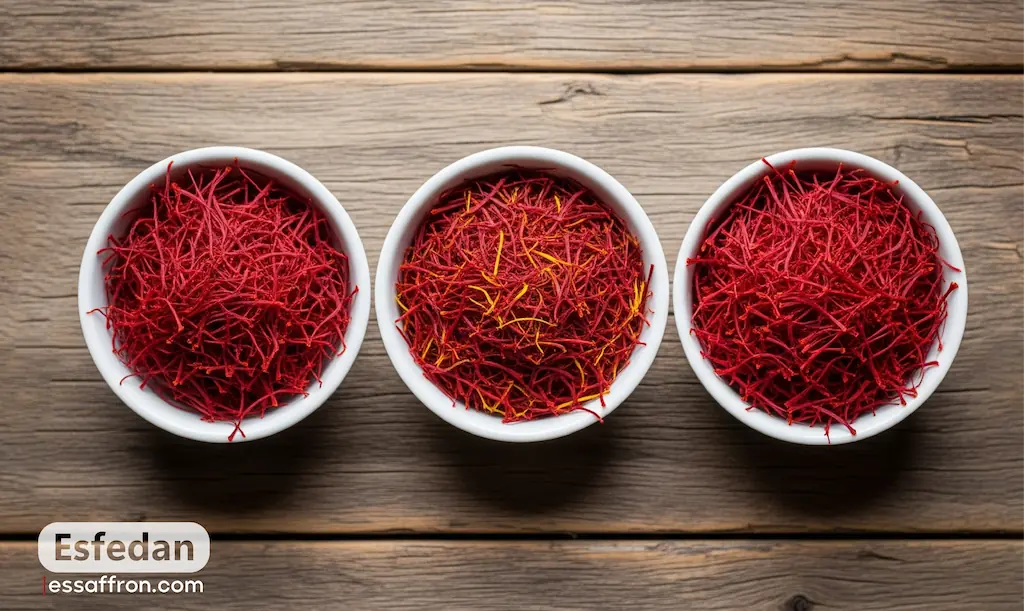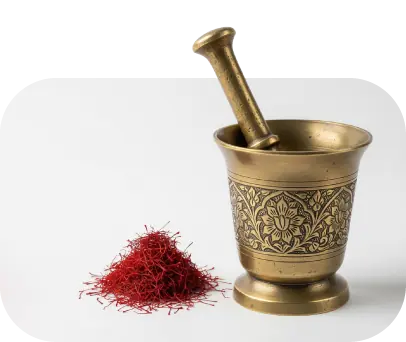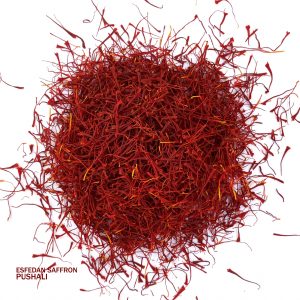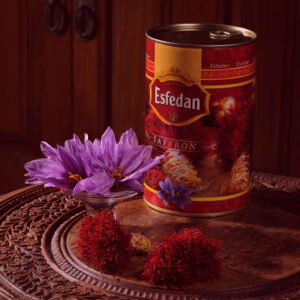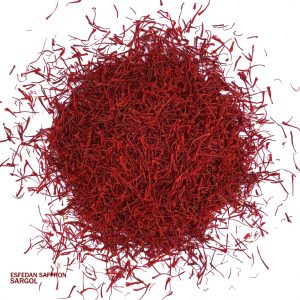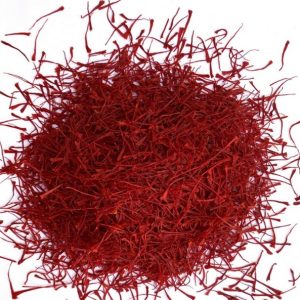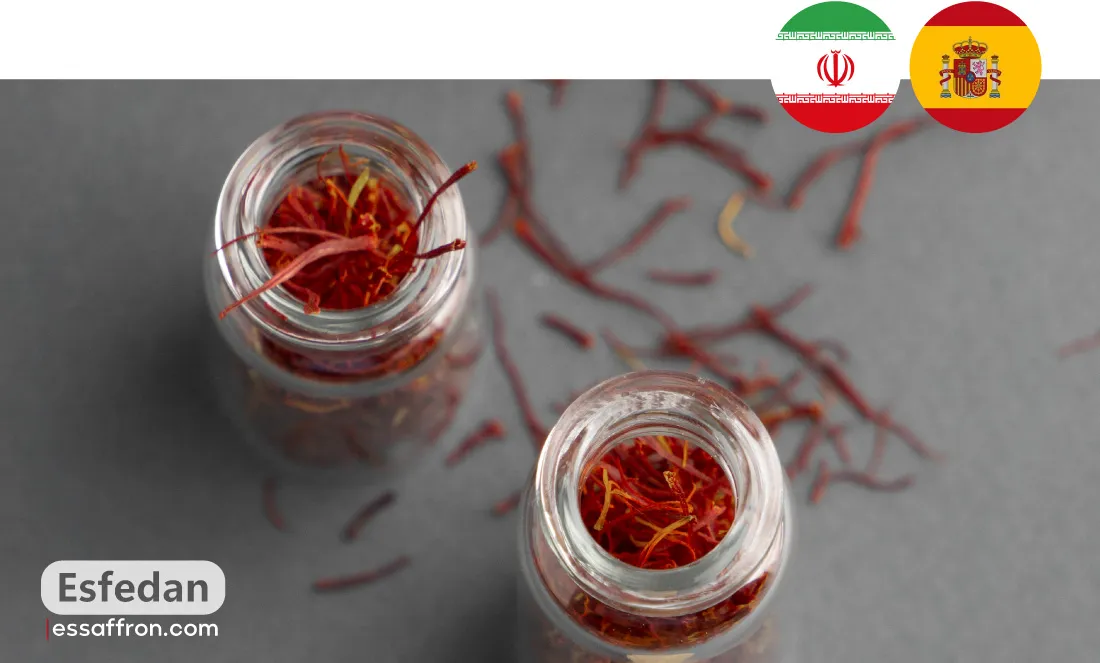Iranian saffron comes in five common types: Super Negin, Negin, Sargol, Pushal, and Dasteh. Super Negin and Negin are long, premium threads; Sargol are broken red tips; Pushal includes a bit of style; Dasteh is a traditional bunch. Choosing the best type depends on use case, grade (ISO 3632), and budget.
What Are the Main Types of Iranian Saffron?
Iranian saffron is categorized into several distinct types, each defined by its unique physical properties and processing method. To provide a clear overview, the table below offers a quick comparison of these varieties based on key characteristics and quality grades. After the table, we will delve deeper into each type, providing a detailed description to help you understand their specific qualities.
|
Saffron Type |
Appearance | Coloring Strength (ISO) | Presence of Yellow Style | Best For |
|
Super Negin |
Long, thick, all-red strands with no breakage. | 250 | None |
High-end export, luxury markets, industrial, and pharmaceutical applications. |
|
Negin |
Long and thick all-red strands, with less breakage compared to Sargol. | 220-250 | None |
Export, general market, fine culinary uses. |
|
Sargol |
All-red, short, and broken strands. Pure without yellow parts. | >220 | None |
Cooking, restaurants, and small retail packaging. |
| Pushal |
Red stigmas with 1-3 mm of the yellow style still attached. |
170-220 | Partial |
Home cooking, high-volume general use. |
| Dasteh (Bunch) |
The complete saffron thread (red stigma and yellow style) is tied in a bunch. |
150-170 | Significant |
Traditional use, saffron tea, and high-volume applications. |
A Closer Look at Iranian Saffron Varieties
After our quick overview, let’s dive into the specifics of each saffron type. Understanding these details will help you appreciate the unique qualities and applications of each variety.
1. Saffron Iran: Super Negin Saffron

Super Negin is the highest quality of Iranian saffron and is renowned globally as the premium grade. This type is distinguished by its long, thick, and unbroken all-red threads, which are meticulously separated from any yellow or white parts. The vibrant, uniform appearance of Super Negin is matched by its exceptional potency. With a coloring strength (Crocin) rating on the ISO scale consistently exceeding 250, it offers the most intense color and aroma of all saffron varieties. To identify genuine Super Negin, look for thick, straight, and untangled threads that are completely free of any yellow style. Due to its superior quality and high aesthetic value, Super Negin is the top choice for luxury markets, high-end restaurants, and the pharmaceutical industry, where both purity and potency are paramount.
Read more: Super Negin Saffron
2. Negin Saffron
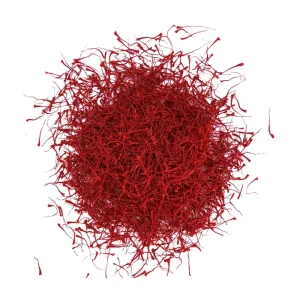
Negin Saffron is a highly regarded type of Iranian saffron, renowned for striking an exceptional balance between premium quality and competitive value. Unlike the bundled Dasteh, this grade consists of pure, all-red saffron threads that have been expertly processed. While it is similar to Super Negin in its high-grade purity, Negin threads have a slightly more natural and less uniform appearance.
This particular saffron, an Iranian type, is celebrated by culinary professionals and global markets for its impressive potency. Its coloring strength (Crocin) is highly concentrated, with an ISO 3632 standard rating typically ranging from 220 to 250. This means it delivers a vibrant, deep color and a rich, powerful aroma and flavor to any dish. Its outstanding performance and stunning appearance make it a favorite among discerning consumers who demand superior quality without the price of the top-tier Super Negin grade.
Read more: Negin Saffron
3. Sargol Saffron
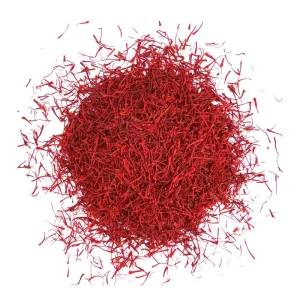
Sargol Saffron, which translates to “top of the flower” in English, is a highly popular and pure form of Iranian saffron. This grade consists exclusively of the all-red threads of the saffron flower, with no yellow style attached. While its threads are shorter and more delicate compared to Negin and Super Negin saffron, they offer an equally powerful coloring strength. With an ISO 3632 standard rating consistently above 220, Sargol delivers a concentrated and intense aroma and flavor. Because of its high purity and potency, this type of Iranian saffron is a favorite among chefs and home cooks who prioritize performance. Its fragmented appearance makes it an ideal choice for grinding or for use in applications where the visual perfection of the threads is not the primary concern.
Read more: Sargol Saffron
4. Pushal Saffron

Pushal Saffron is a distinct type of Iranian saffron that offers an excellent balance between quality and cost. This grade is easily recognizable as it features the red saffron threads along with a small portion (1-3 mm) of the yellow saffron style attached. It is important to know that the presence of the yellow part is completely natural and does not indicate any lack of quality in the red stigmas themselves. While the coloring strength (Crocin) is lower than that of all-red varieties, with an ISO 3632 standard rating between 170 and 220, Pushal still delivers a rich aroma and flavor. Its connected threads also provide a unique, more authentic appearance.
Why Choose Pushal? Pushal saffron is the go-to option for those who seek high-quality saffron on a budget. Its unique presentation with the yellow style ensures authenticity and makes it perfect for traditional cooking and home cooking. Pushal is particularly popular for high-volume culinary applications where its excellent performance and cost-effectiveness are highly valued.
Read more: Pushal Saffron
5. Dasteh (Bunch) Saffron
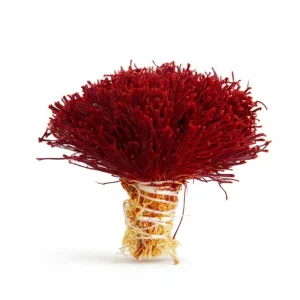
Dasteh Saffron, also known as Bunch saffron, is the most complete and authentic form of Iranian saffron. This grade is distinct as it includes the entire thread from the deep red stigma down to the yellow and white saffron style, all tied together in a neat bundle. This type is a testament to traditional harvesting methods, and its authentic, untouched form is highly valued. While the presence of the yellow part means its coloring strength is lower (typically with an ISO 3632 standard rating ranging from 150 to 170), Dasteh offers a pure and unadulterated experience. It is the ideal choice for consumers who appreciate authenticity and the full visual appeal of the saffron thread. Dasteh is a fantastic option for making saffron tea and is a favorite for traditional cooking, where its unique characteristics are highly desired.
Read more: Bunch Saffron
ISO 3632 Grades & Coloring Strength (Overview)
Lab-tested values (2025 harvest): According to our independent laboratory analysis, our saffron consistently meets or exceeds ISO 3632 Grade I thresholds, with crocin levels often above 250, safranal within an optimal range, and picrocrocin confirming an authentic taste profile. These verified results provide transparency and assurance of quality. (Overview) ISO 3632 classifies saffron by coloring (crocin), aroma (safranal), and taste (picrocrocin). Grade I shows higher test values on average; Grade II/III steps down. Thread type ≠ grade: you can have Grade I Sargol or Grade I Negin, depending on quality.
Which Type Is Best?
Choosing the best saffron in the world depends on your purpose and how you plan to use it:
- Home use or a luxury gift → Super Negin saffron is the top choice; it’s all-red, highly aromatic, with a strong flavor and a beautiful appearance.
- Bulk saffron or export → Depending on your target market, choose between Negin (high quality with a more affordable price) and Super Negin.
- Industrial use or restaurants → Your quality needs and budget will decide; if you want strong coloring power and long-lasting aroma, go for Super Negin.
Still not sure? Contact us now for free advice or leave a message, and we’ll help you choose exactly the right saffron for your needs.
Price & Value in 2025 (Indicative)
Super Negin > Negin > Sargol > Pushal > Dasteh (typical pricing ladder). Prices depend on grade, origin, harvest year, lab results, and packaging.
How to Tell if Iranian Saffron is Authentic
Identifying authentic saffron is crucial. Here are a few simple tips to help you distinguish real saffron from fakes:
- Appearance and Texture: Authentic saffron threads are long, brittle, and trumpet-shaped. Their color is a uniform, deep crimson. Avoid saffron that is powdery, shiny, or greasy.
- Scent and Taste: Real saffron has a strong, sweet aroma reminiscent of honey and hay, but its taste is bitter. If the saffron smells or tastes sweet, it is likely fake.
- The Cold Water Test: Drop a saffron thread into a glass of cold water. Authentic saffron will release its color slowly (over 10-15 minutes), turning the water a yellowish-orange hue. If the color spreads instantly, it’s a sign of a counterfeit product.
- Pressure Test: Real saffron threads are brittle and will break easily under pressure. Fake threads are often flexible and will bend instead of snapping.
By keeping these points in mind, you can confidently choose authentic and high-quality saffron.

Where and How to Purchase the Best Types of Iranian Saffron?
When purchasing saffron, selecting a reputable vendor and a high-quality product is crucial. Saffron is a valuable commodity, and distinguishing authentic saffron from fakes can be a challenge for many people. Therefore, the best way to ensure a confident purchase is to pay attention to a few key points. First, look for a store or brand with a long and trusted history that offers a wide range of Iranian saffron types. A reliable vendor not only provides a quality product but also offers proper and hygienic packaging with complete product information. The packaging should include the national standard mark, production and expiration dates, and any relevant certifications.
Read more: Guide to Purchasing Saffron
If you are looking for the very best option for buying types of Iranian saffron, Esfedan Saffron Company is a smart and trustworthy choice. With over 60 years of experience in producing and supplying saffron, we have established ourselves as a recognized leader in the Iranian saffron industry. For 21 consecutive years, Esfedan has been Iran’s top saffron exporter, shipping our types of Iranian saffron to over 50 countries worldwide. This impressive history demonstrates our commitment to quality and customer satisfaction.
At Iran’s largest saffron factory, spanning 11,000 square meters, we use the most advanced technology for saffron processing and packaging. These facilities allow us to produce and package saffron that meets the highest quality standards. Our products hold numerous national and international certifications, including ISO 9001, FSSC 22000, HACCP, and Halal. These certifications are not just a guarantee of the safety and purity of our saffron but also a testament that our products fully comply with global rules and standards. When you buy from Esfedan Saffron, you are not just getting a spectacular spice; you are also gaining peace of mind from an authentic and high-quality purchase of the finest types of Iranian saffron.
Optimized FAQ — Types of Iranian Saffron (2025)
1. Is Super Negin always better than Negin?
Not necessarily. Grade (ISO 3632) and freshness are more important than thread length alone.
2. Can I use turmeric instead of saffron?
Only for color in some recipes. The flavor and aroma of saffron are unique and cannot be replaced.
3. What is the best type for everyday cooking?
Sargol or Negin (Grade I–II) delivers strong coloring power and good value for daily culinary use.
4. What are the main grades of Iranian saffron?
Iranian saffron is commonly divided into four grades:
-
Negin: Long, thick, unbroken all-red filaments; highest quality.
-
Sargol: All-red stigma tips; very strong coloring, may include some broken threads.
-
Pushal: Red stigmas with 1–3 mm of yellow style; lower coloring strength, affordable.
-
Dasteh (Bunch): Entire thread with red and yellow parts bundled together; traditional and economical.
5. Which type of Iranian saffron is considered the best?
Overall, Negin saffron is regarded as the most luxurious for quality, appearance, and coloring strength. Sargol follows closely and offers exceptional value.
6. What is the difference between Negin and Sargol saffron?
Both are high quality. Negin threads are longer, straight, and unbroken; Sargol threads are shorter and may contain broken tips.
7. Why is Iranian saffron considered the best worldwide?
Iran’s unique climate and soil produce saffron with the highest levels of crocin (color), picrocrocin (flavor), and safranal (aroma), giving it unrivaled intensity and quality.
8. How can you identify high-quality saffron?
Look for three traits:
-
Color: Deep, uniform crimson red threads.
-
Aroma: Strong, fresh, slightly honey-hay (not sweet to taste).
-
Water test: Threads slowly release a golden-yellow hue; instant red color may signal artificial dye.


